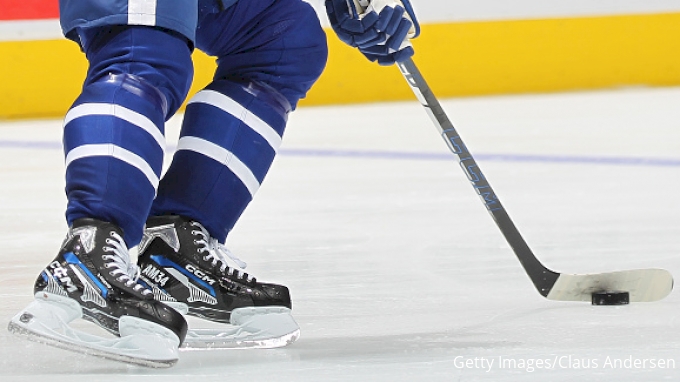A hockey game is divided into periods. Each period lasts 20 minutes.
But there’s more to know about these periods. Hockey periods create the structure of the game. They determine how long teams play before taking breaks. Understanding this helps fans follow the action more closely. In professional hockey, each game consists of three periods.
There are also intermissions between these periods, typically lasting 15 minutes. During these breaks, players rest, and teams strategize. Knowing the length of these periods and intermissions enhances the viewing experience. It also helps in grasping the game’s flow and intensity. Whether you’re a new fan or a seasoned follower, learning about hockey periods adds depth to your appreciation of the sport.

Credit: www.polyglidesyntheticice.com
Introduction To Hockey Periods
Hockey is a fast-paced sport that captivates fans worldwide. Understanding the structure of a hockey game is crucial. One key element is the period. The period defines the segments of play in a hockey game.
Historical Background
The concept of periods in hockey has evolved. Early hockey games had varying lengths and structures. Over time, standardization became essential. The three-period system we know today emerged. This structure offered a balanced approach to gameplay and rest.
Importance Of Time Regulation
Time regulation in hockey ensures fair play. Each period is 20 minutes long. This duration allows for intense, fast-paced action. Regulated periods also ensure player safety. Short breaks between periods help players recover. This maintains high energy levels throughout the game.
Structured periods enhance the viewing experience. Fans enjoy a predictable and exciting game flow. Knowing the period length helps fans anticipate game progress. This predictability keeps the audience engaged and invested.
Standard Duration
Understanding the standard duration of a hockey period is crucial for both new and seasoned fans. Hockey games are intense, fast-paced, and the timing of each period can vary based on the league.
Nhl Period Length
In the National Hockey League (NHL), each game consists of three periods. Each period is 20 minutes long, with a 15-minute intermission between the first and second periods.
The clock stops for various reasons, such as penalties or goals, making the actual game time longer. The 20-minute period ensures a high-paced and exciting game for the fans.
International Variations
International hockey games, like those organized by the International Ice Hockey Federation (IIHF), also have three periods of 20 minutes each. However, some leagues and tournaments may have slight variations in rules.
For example, youth leagues or recreational games might have shorter periods, typically ranging from 12 to 15 minutes. This accommodates the players’ age and skill level.
| League | Period Length | Intermission Length |
|---|---|---|
| NHL | 20 minutes | 15 minutes |
| IIHF | 20 minutes | 15 minutes |
| Youth Leagues | 12-15 minutes | 10-15 minutes |
Intermissions And Breaks
Intermissions and breaks in hockey provide essential pauses during the game. They offer players a chance to rest and strategize. Fans also get the opportunity to grab refreshments or engage in other activities. Understanding the purpose and activities during these intervals can enhance your hockey experience.
Purpose Of Intermissions
Intermissions in hockey serve several important purposes:
- Player Rest: Players need to rest and recover energy.
- Strategizing: Teams discuss tactics and make adjustments.
- Ice Maintenance: The ice surface is cleaned and repaired.
Each of these purposes ensures the game continues smoothly. Rested players perform better. Fresh ice ensures fair play. Strategic discussions can change the game’s direction.
Activities During Breaks
During breaks, various activities keep fans entertained and engaged:
- Refreshments: Fans often get snacks and drinks.
- Entertainment: Performances or games are held on the ice.
- Merchandise: Many fans visit merchandise stands.
These activities make the wait enjoyable. They also provide fans a chance to relax and socialize. Breaks are an integral part of the hockey experience, adding to the excitement of the game.

Credit: www.polyglidesyntheticice.com
Overtime And Shootouts
Hockey games are thrilling, but they can get even more exciting during overtime and shootouts. These periods determine the winner when the game is tied. Understanding the rules and procedures can enhance your enjoyment of the game.
Overtime Rules
Overtime in hockey happens if the game is tied after regulation. In the NHL, this overtime lasts for 5 minutes. Teams play with three skaters each. The first team to score wins the game. If no one scores, the game moves to a shootout.
Shootout Procedures
Shootouts are used to break ties after overtime. Each team selects three players to take shots. Players take turns trying to score on the opposing goalie. The team with the most goals after three rounds wins. If still tied, the shootout goes to sudden death. Each team gets one shot per round until one scores and the other does not.
Special Circumstances
In hockey, the standard period length is 20 minutes. But certain situations can alter this timing. These special circumstances ensure fairness and maintain the game’s integrity. Let’s explore some unique scenarios that impact the period length in hockey.
Extended Play Situations
Overtime is a primary example of extended play. Overtime occurs if the game is tied at the end of regulation. In regular-season NHL games, overtime lasts 5 minutes with three skaters on each side. If no one scores, the game goes to a shootout. Playoff games follow different rules. Overtime periods last 20 minutes, and teams play until one scores. There are no shootouts in the playoffs.
Time Adjustments For Delays
Delays can affect the game time. For example, if there is an injury, the clock stops. The game resumes once the injured player is safely off the ice. Technical issues, like broken glass or ice problems, can also cause delays. Officials adjust the game time accordingly. These adjustments ensure the game is fair and safe for all players.

Credit: www.flohockey.tv
Frequently Asked Questions
How Many Periods Are In A Hockey Game?
A hockey game has three periods.
How Long Is Each Period In Hockey?
Each period in hockey is 20 minutes long.
Is There A Break Between Hockey Periods?
Yes, there is a 15-minute intermission between periods.
How Long Is Overtime In Hockey?
Overtime is 5 minutes in regular season games.
How Long Is A Period In Youth Hockey?
Youth hockey periods can be 12 to 15 minutes long.
Do Hockey Periods Vary By League?
Yes, some leagues may have different period lengths.
How Long Is A Period In College Hockey?
College hockey periods are 20 minutes each.
Can A Hockey Period Be Extended?
Yes, if there is a tie, overtime periods can extend the game.
What Happens During Intermissions In Hockey?
Players rest, and the ice is resurfaced.
Conclusion
Understanding the length of a hockey period is crucial. It helps fans follow games better. Each period lasts 20 minutes. There are three periods in a game. This structure keeps the game exciting and fast-paced. Knowing these basics improves your hockey experience.
Keep these points in mind during your next game. Enjoy the thrill of hockey with a clearer understanding of its timing.




